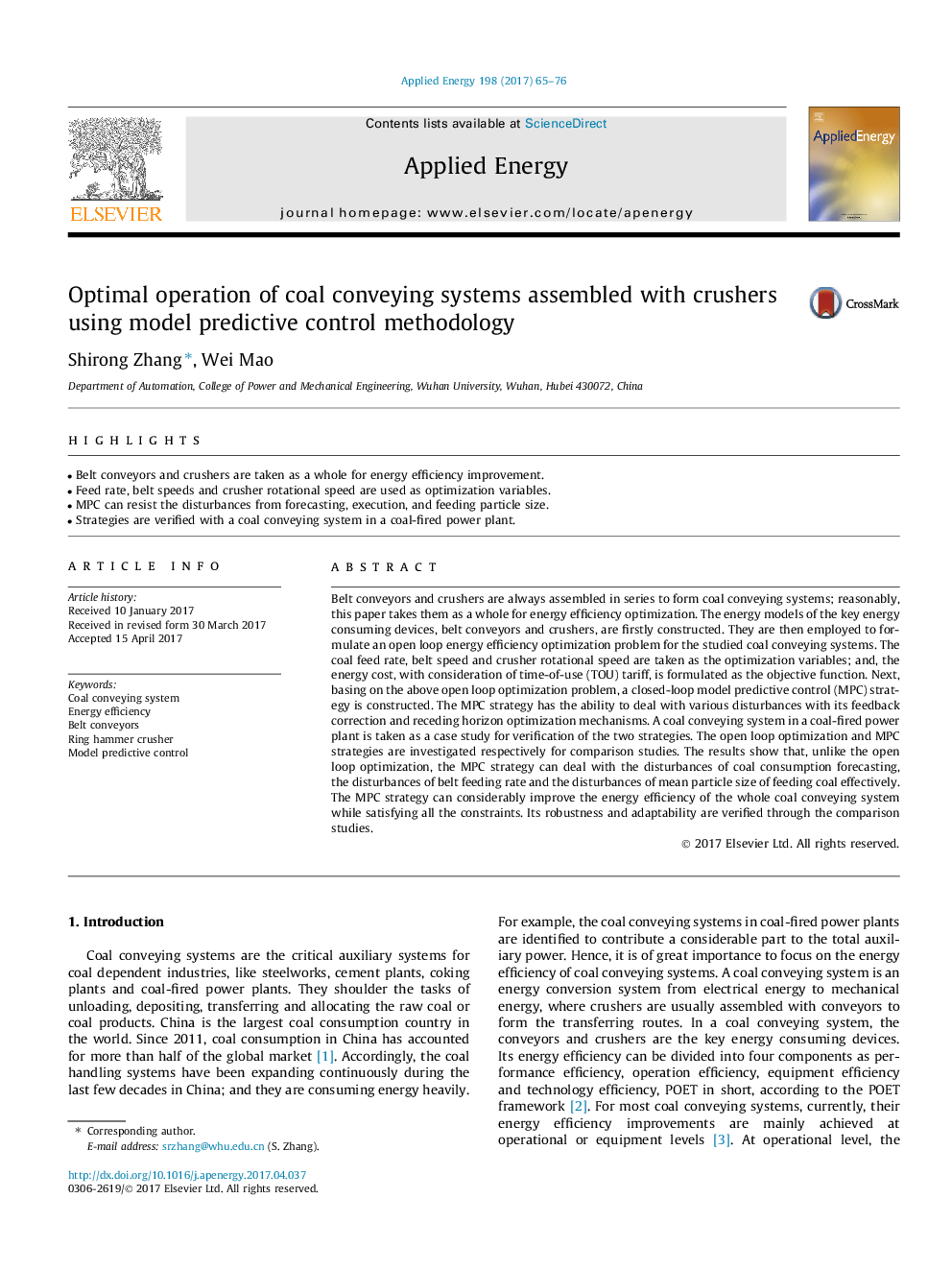| Article ID | Journal | Published Year | Pages | File Type |
|---|---|---|---|---|
| 4911076 | Applied Energy | 2017 | 12 Pages |
Abstract
Belt conveyors and crushers are always assembled in series to form coal conveying systems; reasonably, this paper takes them as a whole for energy efficiency optimization. The energy models of the key energy consuming devices, belt conveyors and crushers, are firstly constructed. They are then employed to formulate an open loop energy efficiency optimization problem for the studied coal conveying systems. The coal feed rate, belt speed and crusher rotational speed are taken as the optimization variables; and, the energy cost, with consideration of time-of-use (TOU) tariff, is formulated as the objective function. Next, basing on the above open loop optimization problem, a closed-loop model predictive control (MPC) strategy is constructed. The MPC strategy has the ability to deal with various disturbances with its feedback correction and receding horizon optimization mechanisms. A coal conveying system in a coal-fired power plant is taken as a case study for verification of the two strategies. The open loop optimization and MPC strategies are investigated respectively for comparison studies. The results show that, unlike the open loop optimization, the MPC strategy can deal with the disturbances of coal consumption forecasting, the disturbances of belt feeding rate and the disturbances of mean particle size of feeding coal effectively. The MPC strategy can considerably improve the energy efficiency of the whole coal conveying system while satisfying all the constraints. Its robustness and adaptability are verified through the comparison studies.
Related Topics
Physical Sciences and Engineering
Energy
Energy Engineering and Power Technology
Authors
Shirong Zhang, Wei Mao,
